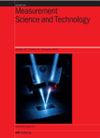Design of flexible sensor for wind pressure monitoring of stay cables
IF 3.4
3区 工程技术
Q1 ENGINEERING, MULTIDISCIPLINARY
引用次数: 0
Abstract
Strong winds can make a bridge’s cable-stayed cables produce violent vibrations, leading to fatigue of the cable-stayed cables and damaging the cable-stayed bridge’s structure. Accurately and effectively obtaining data on the wind loads applied to the cable-stayed cables is important for assessing the cable-stayed cables’ health. Currently, the more widely used sensing elements include diffuse silicon piezoresistive sensors and strain gauges. However, most of them present such disadvantages as rigidity, difficult to fit the curved surface, high cost and low sensitivity. In this paper, a conductive hydrogel flexible pressure sensor based on TA/CB@PDMS was developed, using carbon black (CB) as the main conductive medium, with good electrical conductivity, high sensitivity (0.95 kPa-1) and excellent tensile properties (210% tensile breakage). Meanwhile, a salt permeation method(Soak the sensor in LiBr solution) was used to effectively inhibit the sensor's water from being evaporated and frozen. Its substrate incorporates tannic acid (TA) to increase the sensor’s adhesion so that it adheres well to the diagonal cable’s surface. In this paper, the wind speed variation around the diagonal cable and the force distribution on the surface with considering the fluid-structure coupling effect are analyzed by ANSYS WORKBECH finite element simulation. Wind tunnel experiments simulate the sensor’s force response when the inclined cable is subjected to different wind speeds, and the detection accuracy reaches 96.17%. The results show the sensor developed in this paper can realize accurate wind pressure detection of the inclined cable. This study provides a new method for wind pressure detection and health inspection of diagonal cables.设计用于留置电缆风压监测的柔性传感器
强风会使桥梁的斜拉索产生剧烈振动,导致斜拉索疲劳并破坏斜拉桥的结构。准确有效地获取斜拉索所受风载荷的数据对于评估斜拉索的健康状况非常重要。目前,应用较为广泛的传感元件包括扩散硅压阻传感器和应变片。然而,它们大多存在刚性差、难以适合弯曲表面、成本高、灵敏度低等缺点。本文以炭黑(CB)为主要导电介质,开发了一种基于 TA/CB@PDMS 的导电水凝胶柔性压力传感器,具有良好的导电性、高灵敏度(0.95 kPa-1)和优异的拉伸性能(210% 拉伸断裂)。同时,采用盐渗透法(将传感器浸泡在 LiBr 溶液中)可有效抑制传感器水分的蒸发和冻结。其基材中加入了单宁酸(TA),以增加传感器的附着力,使其能够很好地附着在斜拉索表面。本文通过 ANSYS WORKBECH 有限元仿真分析了斜拉索周围的风速变化以及表面上的力分布,并考虑了流固耦合效应。风洞实验模拟了斜拉索受到不同风速时传感器的受力响应,检测精度达到 96.17%。结果表明,本文开发的传感器可以实现对斜拉索风压的精确检测。这项研究为斜拉索的风压检测和健康检查提供了一种新方法。
本文章由计算机程序翻译,如有差异,请以英文原文为准。
求助全文
约1分钟内获得全文
求助全文
来源期刊

Measurement Science and Technology
工程技术-工程:综合
CiteScore
4.30
自引率
16.70%
发文量
656
审稿时长
4.9 months
期刊介绍:
Measurement Science and Technology publishes articles on new measurement techniques and associated instrumentation. Papers that describe experiments must represent an advance in measurement science or measurement technique rather than the application of established experimental technique. Bearing in mind the multidisciplinary nature of the journal, authors must provide an introduction to their work that makes clear the novelty, significance, broader relevance of their work in a measurement context and relevance to the readership of Measurement Science and Technology. All submitted articles should contain consideration of the uncertainty, precision and/or accuracy of the measurements presented.
Subject coverage includes the theory, practice and application of measurement in physics, chemistry, engineering and the environmental and life sciences from inception to commercial exploitation. Publications in the journal should emphasize the novelty of reported methods, characterize them and demonstrate their performance using examples or applications.
文献相关原料
公司名称
产品信息
麦克林
LiBr
阿拉丁
tannic acid
阿拉丁
carbon black
阿拉丁
N,N'-Methylenebisacrylamide
阿拉丁
N, N, N, N-Tetramethylethylenediamine
阿拉丁
ammonium persulfate
阿拉丁
acrylamide
 求助内容:
求助内容: 应助结果提醒方式:
应助结果提醒方式:


